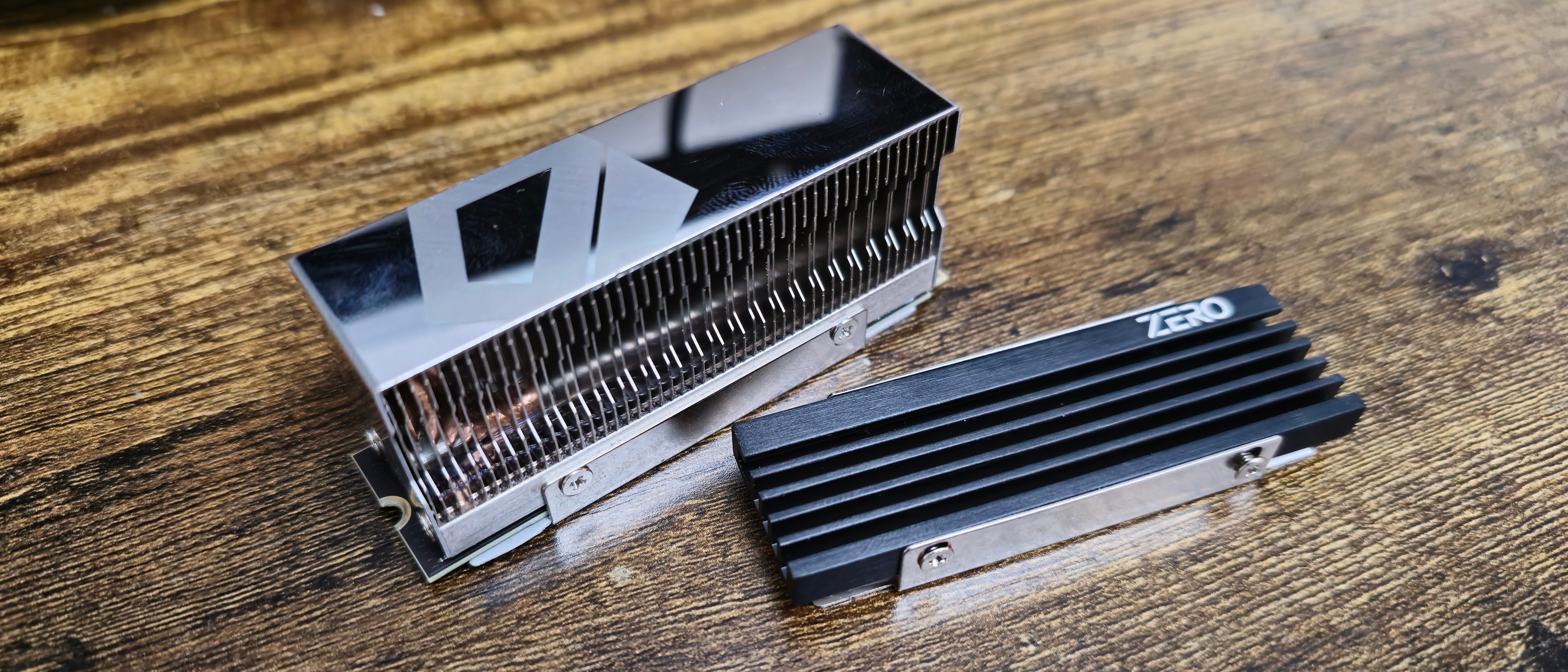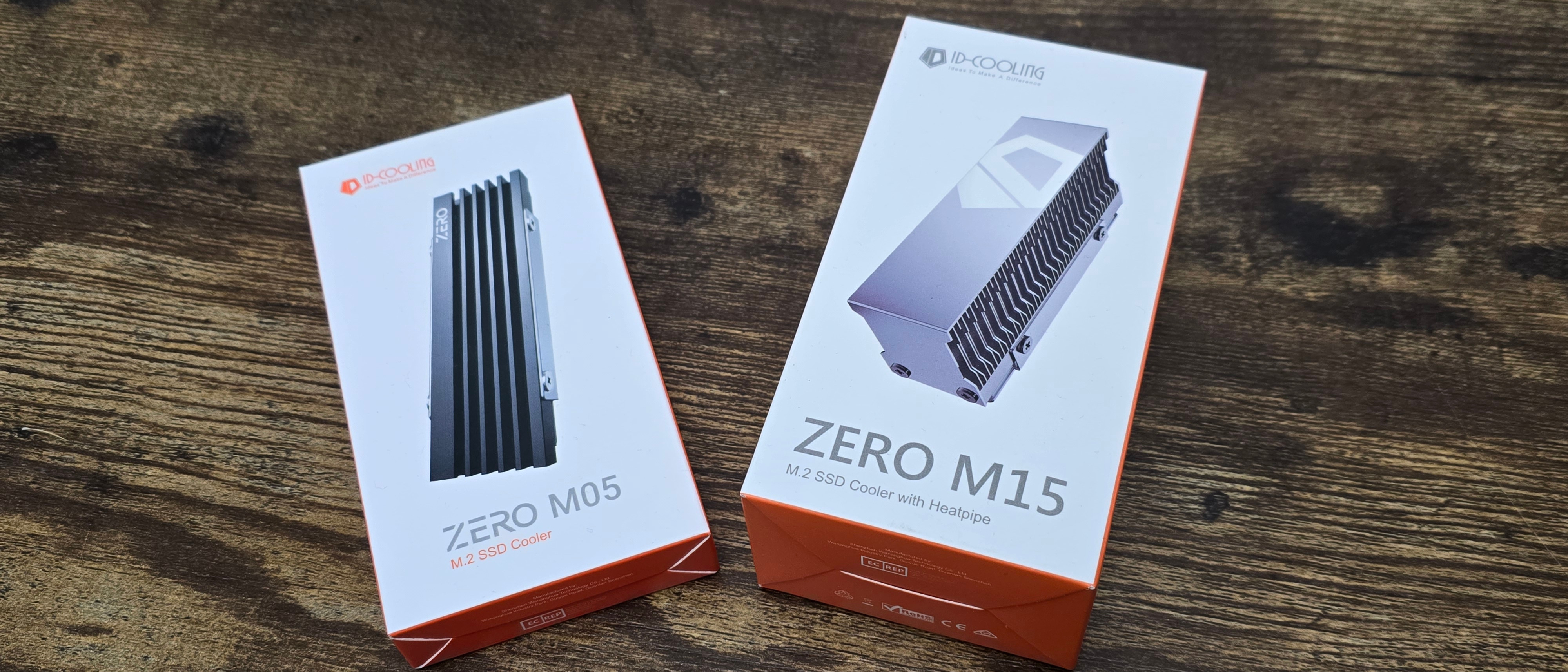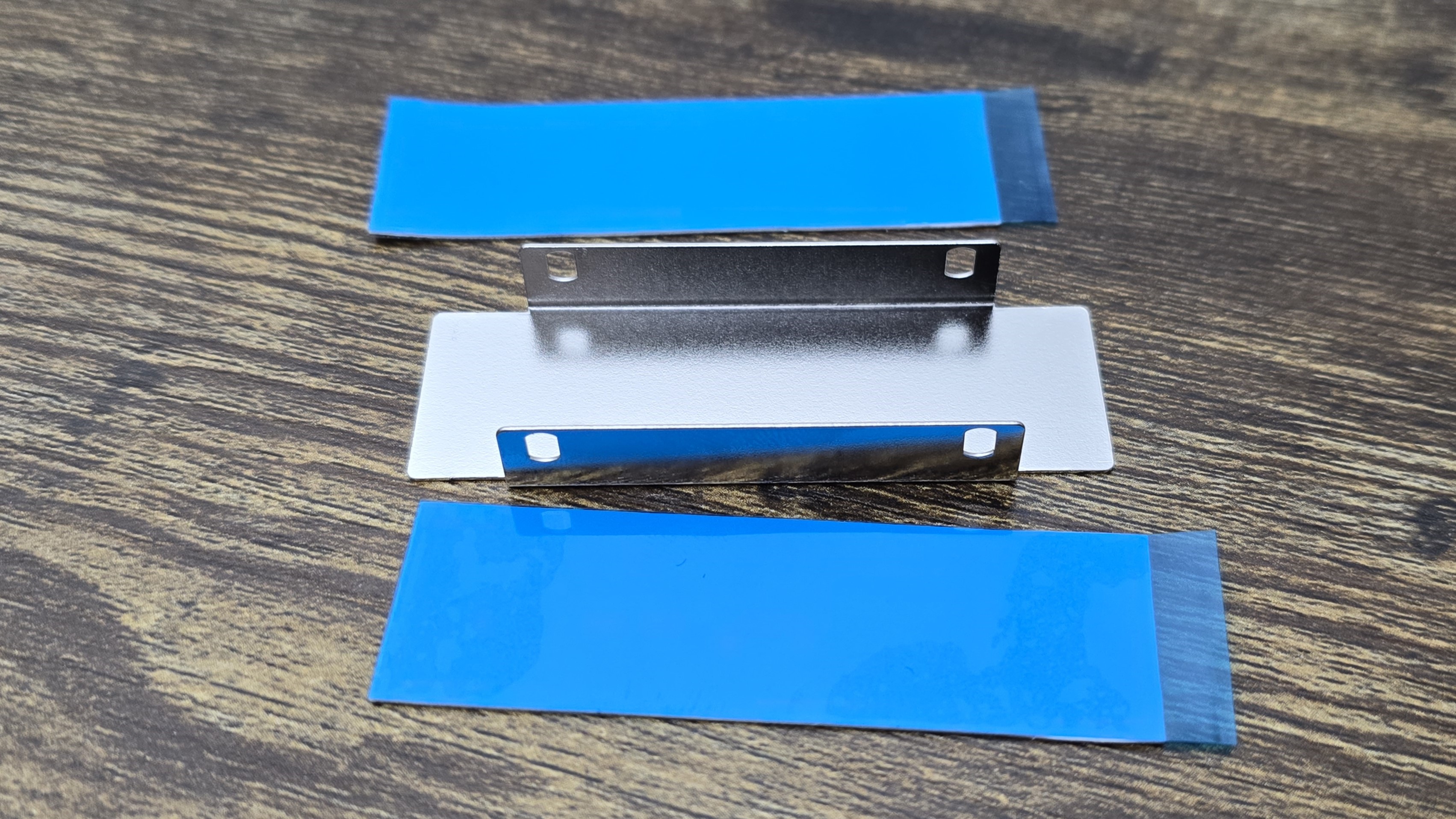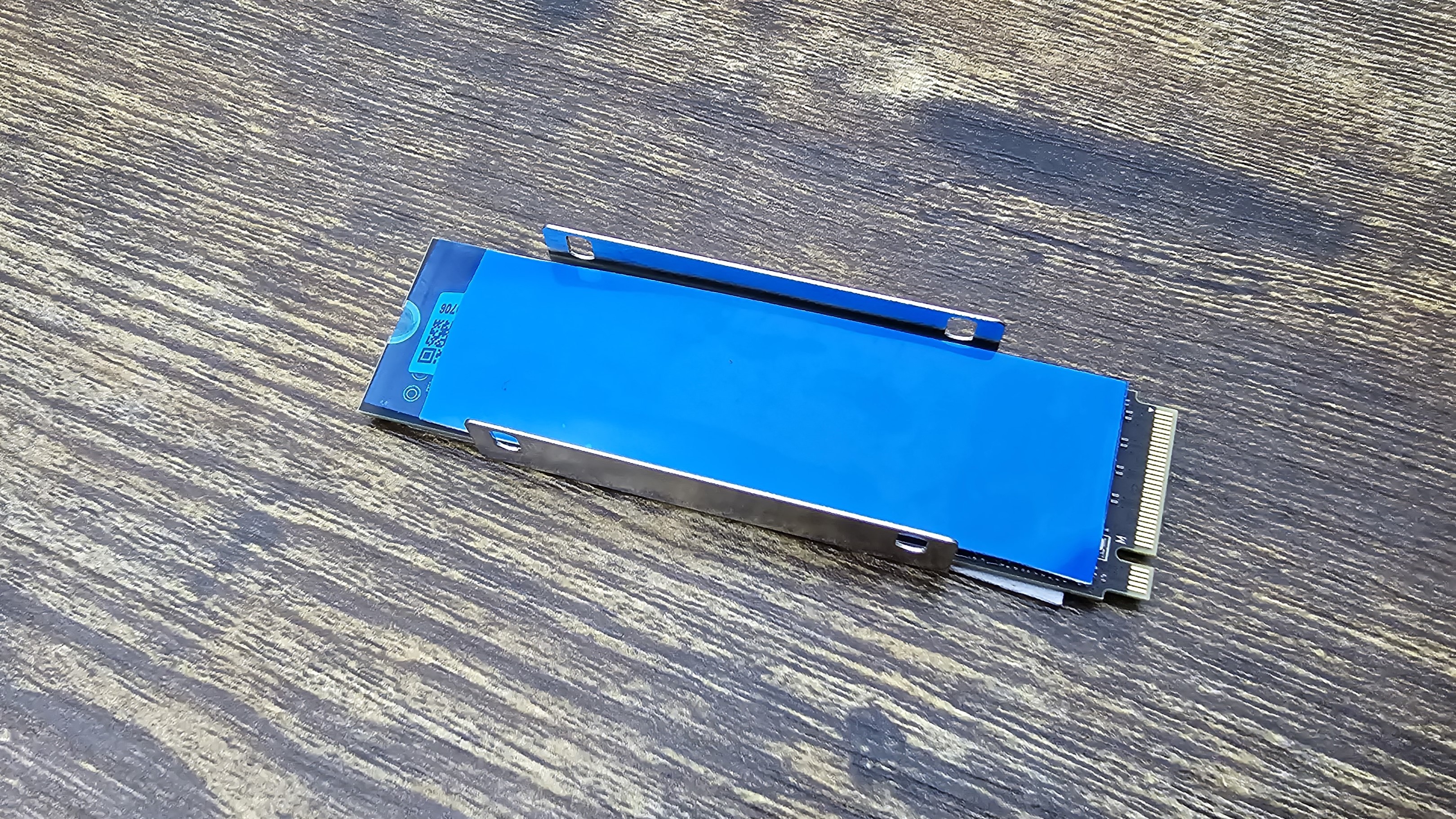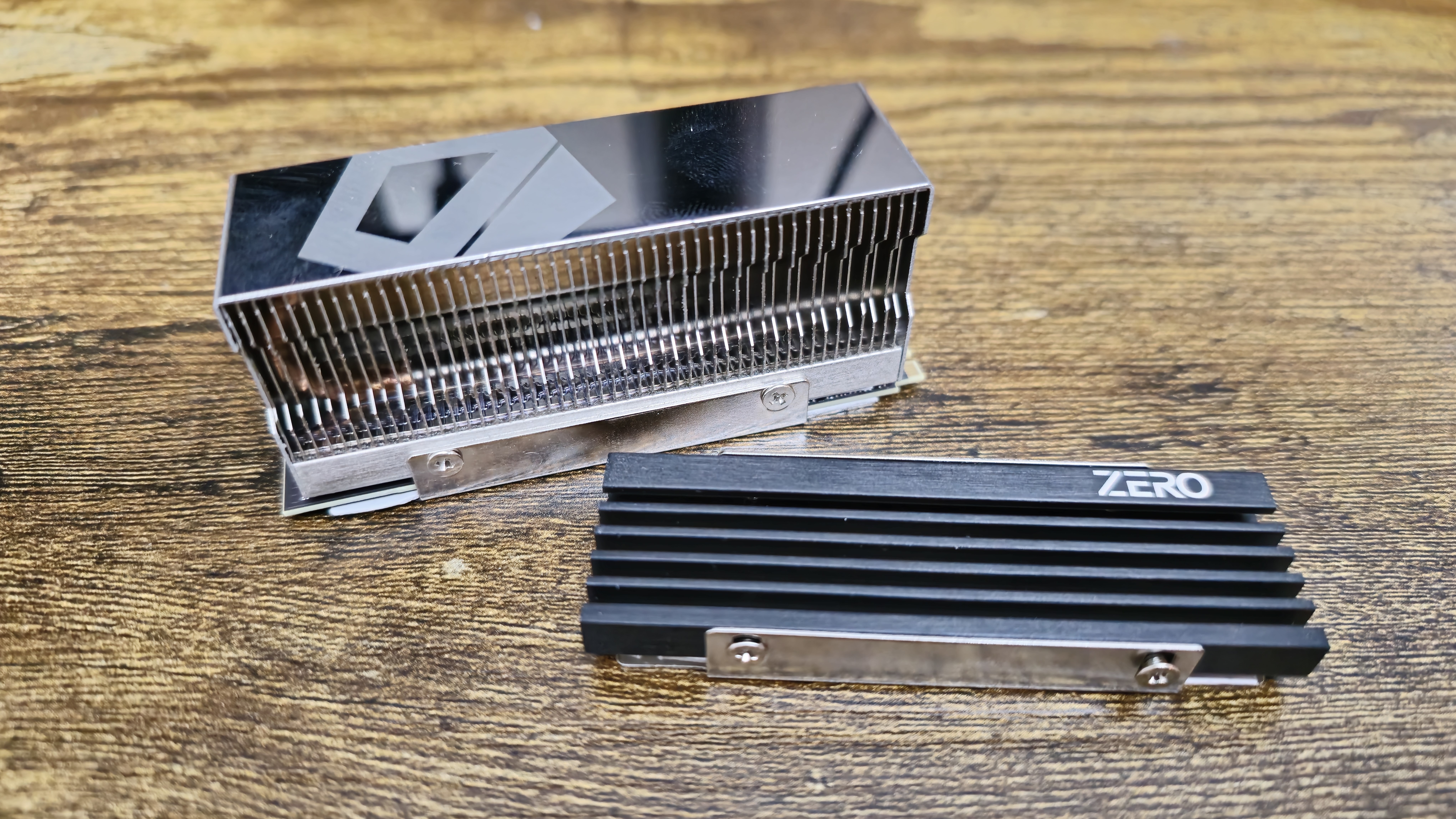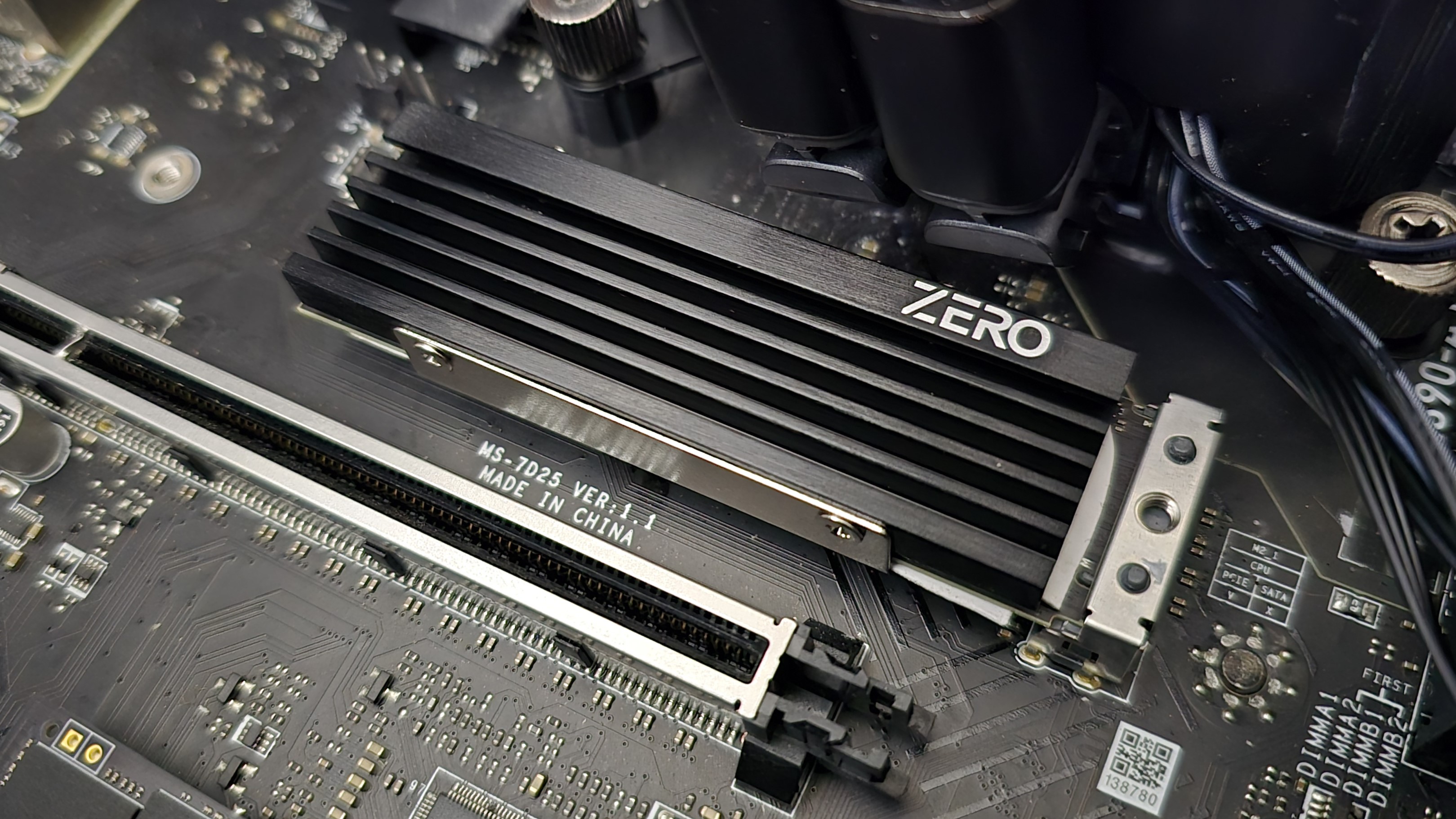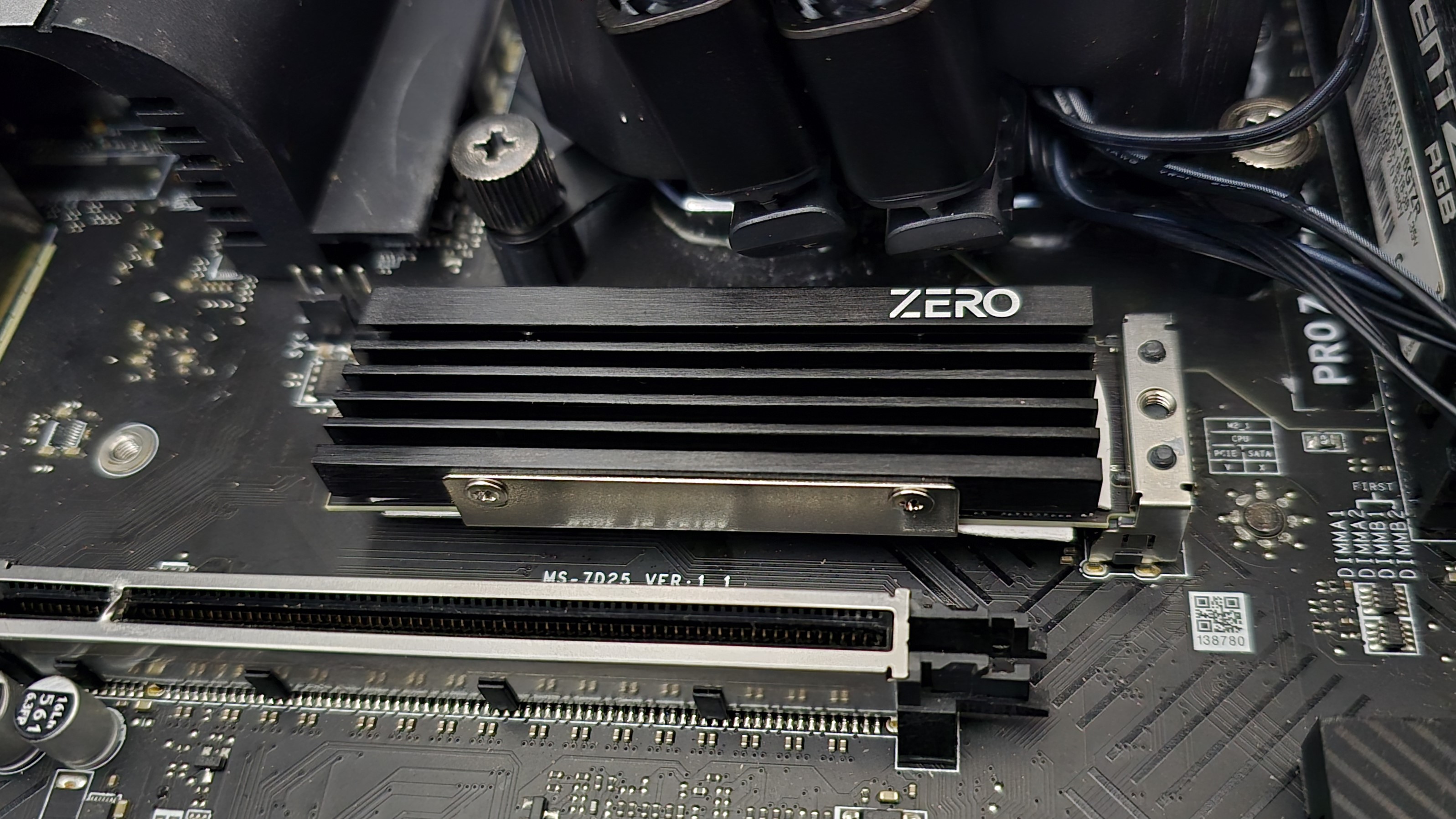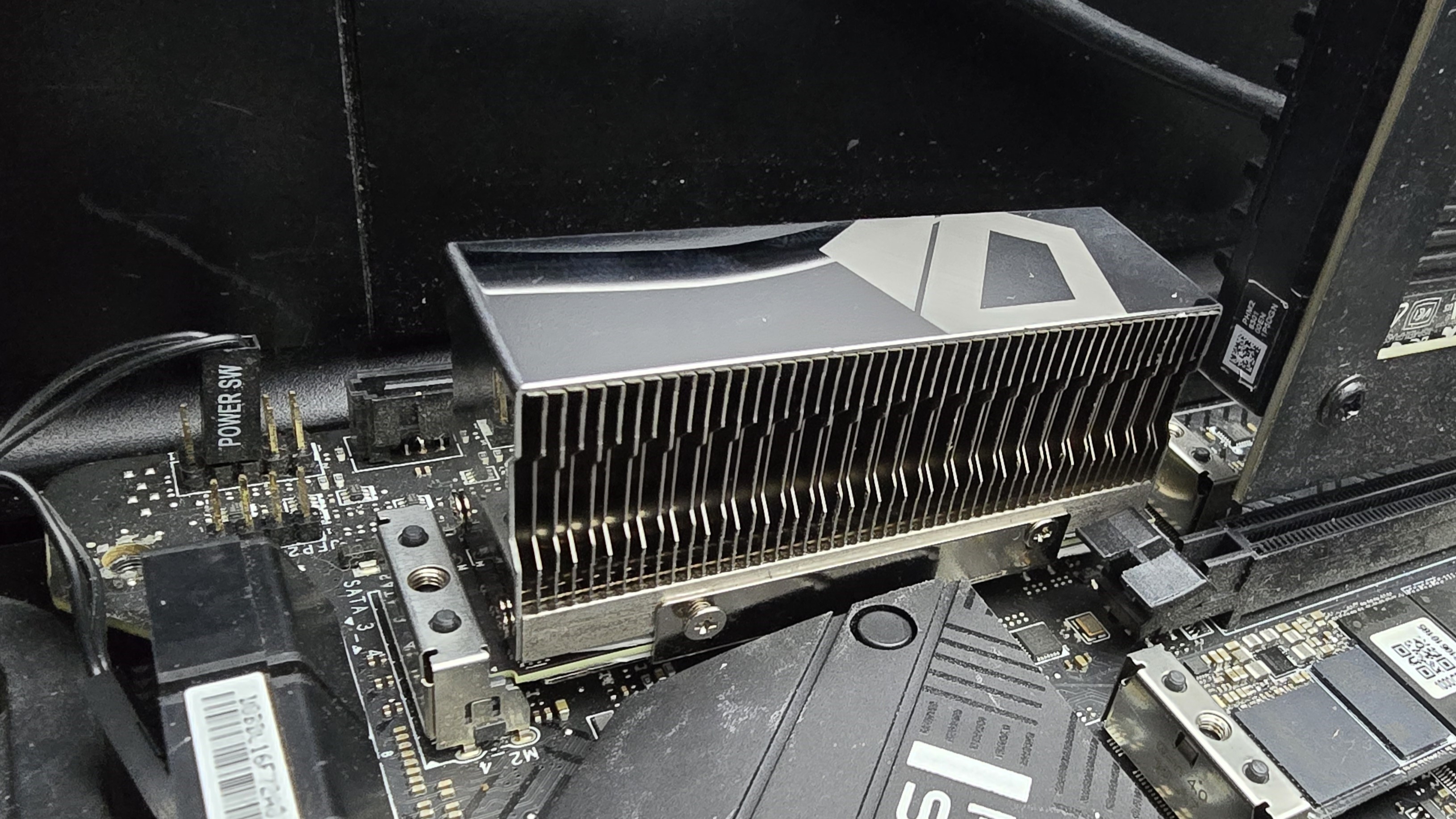Tom's Hardware Verdict
ID-Cooling’s heatsinks provide effective cooling for your PCIe 5 SSD. The M05 unit will be sufficient for most users, but professionals with storage-heavy workloads should consider the M15 instead.
Pros
- +
Very affordable at only $5-$10 USD
- +
The M05 offers basic cooling for common users
- +
The M15 is capable of handling professional workloads
Cons
- -
The M15 cannot be installed next many air coolers
Why you can trust Tom's Hardware
Until recently, cooling and storage was at best an afterthought for most enthusiasts and PC builders. In short, it really wasn’t a concern outside of servers jam-packed full of hard drives.
But current generation PCIe 5 SSDs can move data faster than ever before, and pushing those speeds for prolonged periods can generate a bit of extra heat. With these modern drives, not only is some kind of cooling recommended, it is often a requirement to prevent throttling or even crashing in some instances.
Over the past couple of years, manufacturers have begun creating a wide variety of heatsinks and coolers for NVMe SSDs to ensure they’re able to maintain their maximum speeds. Heatsinks large and small, with or without active fans, and even liquid cooling solutions are now available for NVMe SSDs.
Today’s review will be our first covering this emerging category of products – we’ll be looking at two SSD heatsinks from ID-Cooling, the M05 and the M15. The M15 features a thick heatsink with fins and a copper heatpipe for effective heat dissipation. And the M05, on the other hand, is a simple heatsink designed for essential performance and maximum compatibility. To see if these coolers are worth spending your hard-earned build budget on (the good news is, these two cost between $5 and $10), we’ve tested them against 25 competing SSD heatsinks to see how they perform against the competition.
Cooler Specifications
| Heatsink | ID-Cooling M05 / M15 |
| MSRP | $4.99/$9.99 |
| Heatsink Material | Aluminum/Aluminum Fins + 6mm Heatpipe |
| Compatibility | M.2 2280 |
| Dimensions | 73mm (L) x 22.4 (W) x 6mm (D) / 74.2mm (L) x 22.5mm (W) x 30 mm (D) |
| Net Weight | 38g / 80g |
Packing and Included Contents
ID-Cooling’s ZERO M05 arrives in a small 12 (L) x 6.5 (W) x 2 (D) cm box. The M15 is the same but with a larger depth of 4.5cm. The M15 is protected by molded foam for the protection of the heatsink, whereas the M05 arrives in molded plastic. Included with each unit are the heatsink, screws, and thermal pads necessary to use the product.
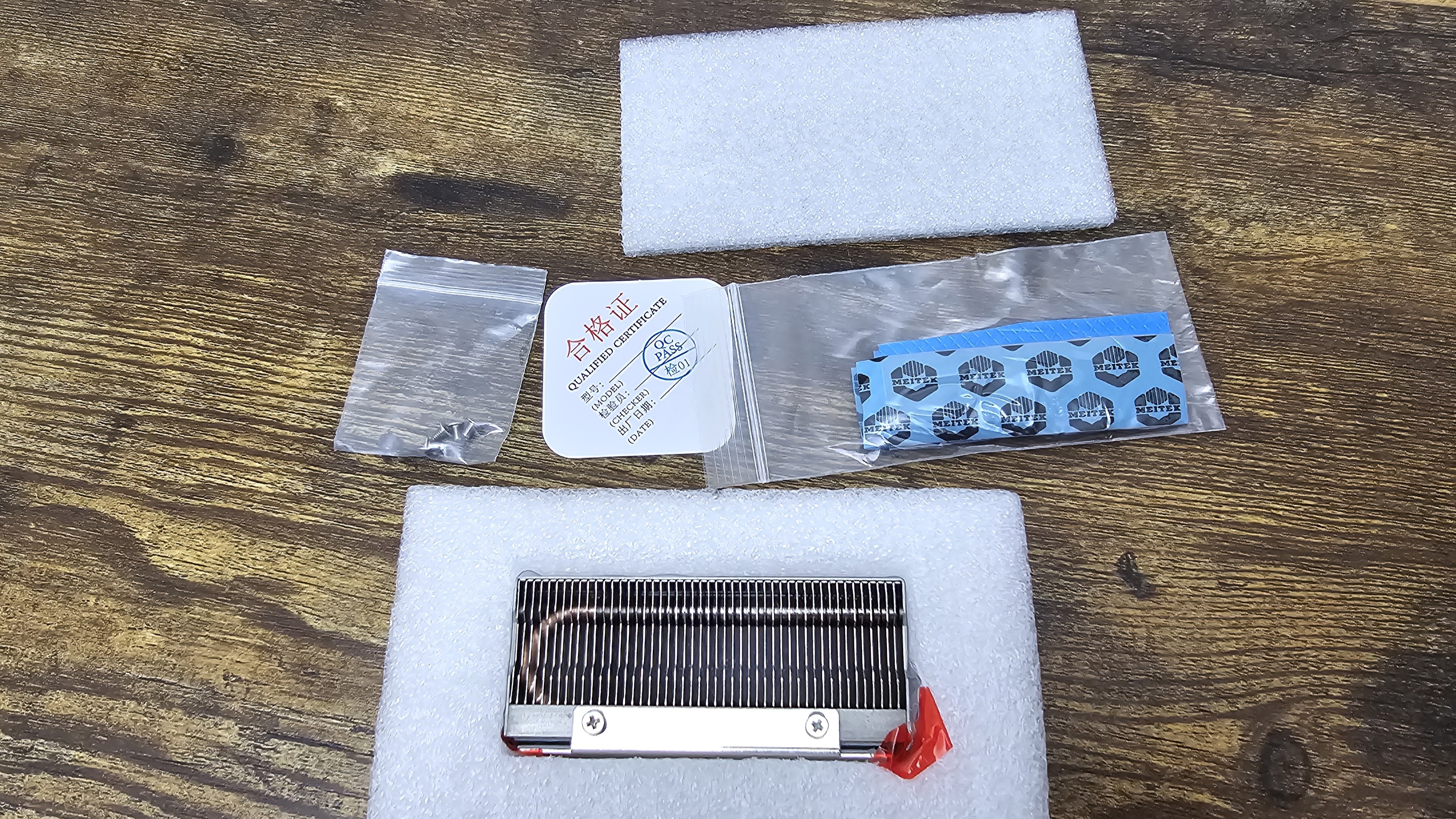
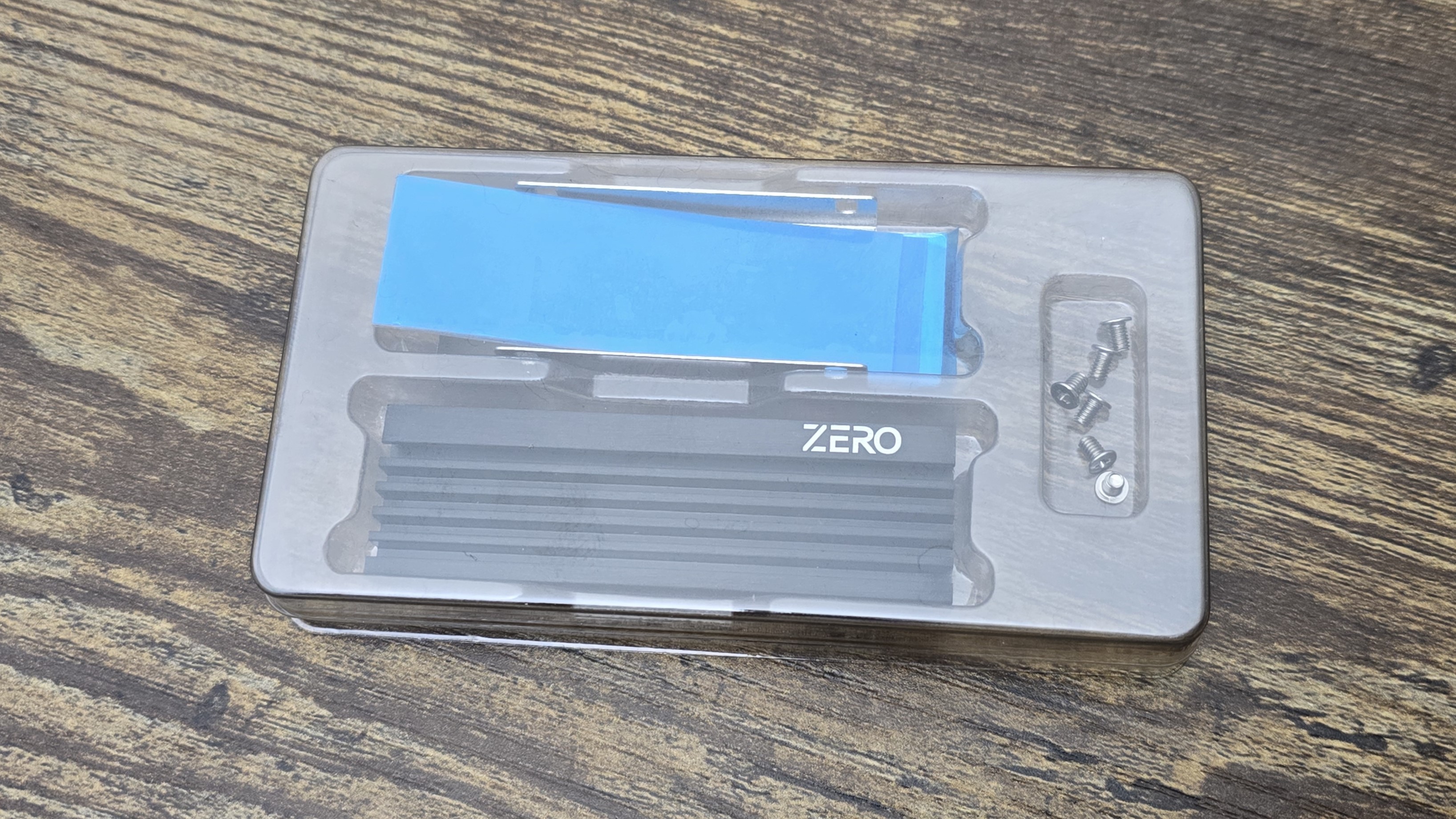
Installation
The installation of the NVMe heatsinks is simple and generally quick to complete.
1. First, you’ll take the base of the heatsink and apply the first thermal pad to it
Get Tom's Hardware's best news and in-depth reviews, straight to your inbox.
2. Place your M.2 NVMe SSD onto the thermal pad. Take the second thermal pad, and place it on top.
3. Next, place the heatsink on top of the SSD and secure it using the included screws.
4. The last step is to place the unit into an m.2 slot and secure it using a screw or a latch if you have a fancier motherboard.
Features of ID Cooling's Zero M05 and M15 SSD heatsinks
▶ Double sided SSD support
Some NVMe heatsinks only effectively cool the top side of an SSD – which means they’re not ideal for drives with NAND on both sides of the PCB. ID-Cooling’s Zero M05 and M15 both support double-sided SSDs and keep both sides of the unit cooled effectively.
▶ M05: Low profile for maximum compatibility
The M05 model is fairly basic, featuring a simple aluminum heatsink with thick fins. As it is only 6mm tall, it is fully compatible with any component you might consider installing nearby.
▶ M15: Tall and thick heatsink for maximum cooling
While the M05 is petite, designed for maximum compatibility,the M15 is 30mm thick and designed for enhanced thermal dissipation. In addition to the array of aluminum fins, heat is also transferred away from the SSD via the 6mm copper heatpipe integrated into the heatsink.
As this is a taller heatsink, there will be some compatibility restrictions. You won’t be able to install this next to a CPU with some air coolers like DeepCool’s Assassin IV - the heatpipes of the unit interfere with it. Other air coolers like ID-Cooling’s A720, and virtually all liquid coolers, shouldn’t have compatibility issues and you can install taller heatsinks like the M15 next to them.
Testing Methodology
With SSD heatsinks, a lot of you are probably asking if it really matters. And if you’re a typical user who merely loads a few applications and games from time to time – you probably don’t need an advanced heatsink. I’ve run a variety of tests, and for common tasks like loading a game or application, you generally don’t need more than a basic heatsink – at least not with current SSDs and workloads.
Most users who will need cooling for their drives will already be aware that they need one. This includes users whose workloads are IO-intensive or involve high-resolution video editing.
We’re also trying to look to the future here, to an extent. While today’s common workloads might not need anything more than a basic heatsink, this may change with PCIe 6 and future standards which will allow for higher speeds (and potentially higher power consumption) in consumer SSDs.
After consulting storage experts across the industry who work for Sabrent, Solidigm, Phison, Micron, and other storage manufacturers I’ve created an IOMeter script that’s specifically designed to stress an SSD’s controller and NAND, causing it to reach its maximum temperature (also known as TJ Max). The ambient temperature is maintained at 23 degrees Celsius while these tests are performed. The SSD used is Teamgroup’s Z540 SSD, which is powered by Phison’s E26 controller.
This test will cause throttling when paired with lower-end heatsinks. For those heatsinks, we’ll be looking at the IOPS of the drive during testing. The more advanced heatsinks and coolers will be capable of keeping the SSD under its peak temperature – for these units, we’ll compare the actual temperatures of the TeamGroup Z540 SSD.
How hot is too hot? Does cooling even matter for a SSD?
When I was determining how to test these units, I consulted with many storage industry experts before I started testing. They emphasized that modern PCIe 5.0 drives need at least some sort of cooling to avoid throttling and that even basic workloads can be impacted by minor throttling without a heatsink.
If peak performance in common scenarios like gaming is your only goal, then most basic heatsinks will offer satisfactory performance. However, users with storage intensive workloads will require a stronger heatsink, like the ID-Cooling M15 SSD heatsink we’re reviewing today, in order to prevent their SSDs performance from throttling. The impact of this potential throttling can vary; lighter loads won’t be impacted as much, but in the worst case scenario I tested I measured a 92% loss of performance without cooling on a PCIe 5.0 SSD.
You might think that’s the only aspect to consider when looking at a heatsink, but the thermals of a SSD also have a huge impact on a drive’s longevity. Much like other electronic components, extreme variations in temperature cause wear and tear, reducing lifespan. Now lets be real here - most users shouldn’t need to worry about longevity, and instead should purchase a drive from a reliable manufacturer that has a good warranty. While this is our general recommendation, there are scenarios where this won’t apply - if you purchased a refurbished SSD at a discount, you can’t expect to have a long warranty.
Finally, there’s the matter of dealing with the hassle of a warranty. While it is nice to know that a failing drive will be replaced by the manufacturer, why create an environment where such a claim is likely to happen? I’d argue that it would be wiser to invest $10 or $15 into a heatsink to extend the lifespan of your SSD so that you don’t have to worry about dealing with the paperwork and time involved to process a warranty claim.
In theory if your NVMe SSD arrives with a heatsink from the manufacturer, you shouldn’t need to worry about a heatsink at all. Most of the heatsinks I’ve seen paired with high end PCIe 5 SSDs are more than capable enough of handling strong thermal loads. However, many drives do not include a heatsink with the purchase of a SSD and you would be a fool to run a high-speed PCIe 5 SSD entirely uncooled as performance will suffer even in common workloads.
When it comes to heatsinks for SSDs, the important thing to take away here is that every expert I’ve spoken to in the storage industry agrees that it is best practice to minimize temperature variations for the health and longevity of your SSD. How strong of a heatsink you’ll need is another matter for debate. In common scenarios, most users will be fine with basic heatsinks - but professionals or users with storage intensive workloads might want to invest in a stronger heatsink.
Testing configuration – Intel LGA1700 platform

Albert Thomas is a contributor for Tom’s Hardware, primarily covering CPU cooling reviews.
-
PlutoDelic Around a year ago, TeamGroup was mocking around with that AIO 120mm for SSD's. While niche in itself, i still think it's a wonderful idea to have that AIO there instead of as Exhaust fan.Reply
The moment one comes around with a 140mm rad, i'm jumping ship to PCIe Gen5. But with the current stand, PCIe Gen4 is more than enough. -
HideOut We tested 30 m.2 SSD heatsinks to find the top performer: ID-Cooling Zero M05 and M15 ReviewWe’ve tested 27 M.2 NVMe heatsinks to see how well they perform and what is best for your SSD’s peak performance.So which is it, 30 or 27?Reply -
Notton Does the Teamgroup Z540 have an even top level between its NAND, DDR, and controller?Reply
Some people recommend using two or more pads when the heights are uneven.
I used thick backside thermal pads on dual-sided SSDs, because there's usually a void with sparse SMD resistors under the controller and RAM. I figure the heatsink would need some pressure applied to the backside of the PCB, and not the SMDs to make proper contact with the controller. -
Albert.Thomas Reply
I should have that one for testing soon!PlutoDelic said:Around a year ago, TeamGroup was mocking around with that AIO 120mm for SSD's. While niche in itself, i still think it's a wonderful idea to have that AIO there instead of as Exhaust fan.
:oops:HideOut said:
We tested 30 m.2 SSD heatsinks to find the top performer: ID-Cooling Zero M05 and M15 ReviewWe’ve tested 27 M.2 NVMe heatsinks to see how well they perform and what is best for your SSD’s peak performance.So which is it, 30 or 27? -
thestryker Glad to see your M.2 heatsink testing land here at Tom's and with some additions!Reply
I wish the M05 had been out when I was getting mine as the best thing in the size was Thermalright's TR, but those don't really have fins. Fortunately they're good enough, but these would certainly have been a better choice.
The Team Group AIO seems like extreme overkill so I look forward to the ridiculousness. -
Amdlova You can place thermal pads on the back touching the motherboard :) droop the temps a lot :)Reply -
Albert.Thomas I've realized from some of the comments on other places that I need to explain my testing methodology in a bit more detail.Reply
1) Testing is comprised of 3x 30 minute runs. The first test is a burn in test. The 2nd test is the primary testing run, and the third test is for verification. Thus far, the results of tests 2 and 3 have always been the same. However, if that ever occurs another round of testing will happen.
2) I use a 360mm AIO during testing, as the airflow of a CPU cooler will impact results. However, there's a good argument to made that an air cooler should be used with these lower end heatsinks. In the future I plan to test a few of them with an air cooler to investigate how much it improves their performance. -
mac_angel umm, not sure if I missed it. A lot of motherboards have their own heatsinks for m.2 drives now. While they aren't going to be as great as the M15, how do they measure up to nothing at all?Reply -
Albert.Thomas Reply
You bring up a good point. For the next review I submit of this type, which will cover TeamGroup's Airflow I SSD Cooler, I'll be sure to test the default heatsink my motherboard includes.mac_angel said:umm, not sure if I missed it. A lot of motherboards have their own heatsinks for m.2 drives now. While they aren't going to be as great as the M15, how do they measure up to nothing at all? -
thestryker While it'll be interesting to see what the motherboard heatsink does they vary so much depending on motherboard model. I'd imagine most motherboard heatsinks will be around the same as low-mid range third party. I think the third party ones are mostly for additional slots that don't come with heatsinks or you want PCIe 5.0 peak performance. My last motherboard came with a heatsink for the primary M.2 so at minimum I had to buy two more for the other two slots, and then I have 2 cards with 2 M.2 each so another 4.Reply
